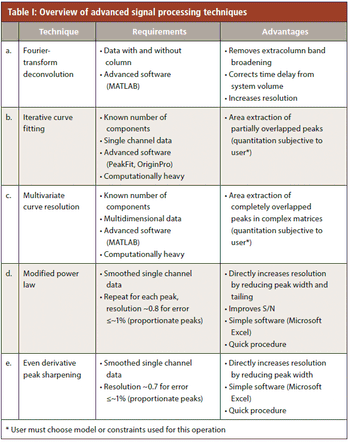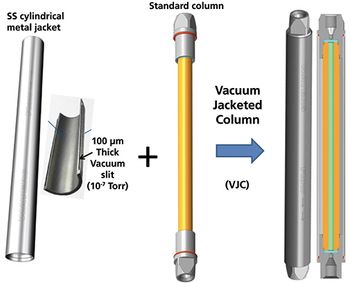
Special Issues
Click the title above to open the Recent Developments in HPLC and UHPLC 2019 special issue in an interactive PDF format.

Special Issues
Click the title above to open the Recent Developments in HPLC and UHPLC 2019 special issue in an interactive PDF format.

Special Issues
Ultrahigh efficiency separations based on the presence of one deuterium in benzene, toluene, and naphthalene were achieved by recycle chromatography using C18 silica columns. The discrimination mechanism of H/D isotopic species is discussed based on the dispersion interactions of a CH/CD group of the solute with the stationary phase as well as the mobile phase.

Special Issues
The advantages and limitations of several recently introduced mathematical procedures for enhancing peak resolution in liquid chromatography (LC) are described. Despite advanced separation technologies and extensive knowledge in method development, peak overlap is still commonly observed. This article gives a brief overview of the advantages and limitations of recently introduced mathematical procedures for enhancing resolution.

Special Issues
The impact of ionic strength, buffer capacity, and pH-response on the retention behavior and peak shape of mAb species characterization is evaluated for IEX-MS. The aim of the present study was to understand the impact of ionic strength, buffer capacity, and pH-response on the retention behavior and peak shape of mAb species.

Special Issues
The design of a user-friendly vacuum-jacketed column (VJC) is described for improved LC–MS performance, which does not require a large vacuum chamber with multiple vacuum pumps. Using this configuration, the experimental peak capacities measured for a 2.1 mm × 100 mm column packed with sub-2-μm particles and placed in the VJC-MS probe are doubled with respect to standard LC–MS systems.